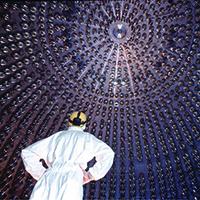GUARDARE IL MONDO CON I NEUTRINI: IL SOLE, LA TERRA E L’UNIVERSO
DOI:
https://doi.org/10.4081/scienze.2021.787Abstract
Neutrinos are the most elusive and ubiquitous known building blocks in the Universe. Predicted by Wolfgang Pauli in 1930 and then theoretically elaborated by Enrico Fermi and Ettore Majorana in the following years, they were discovered experimentally in 1956 and since then they have never ceased to surprise us with their, sometimes disconcerting, properties. There are three different types that can transform into each other, devoid of electric charge, very light but with a very small mass, at least a million times lower than that of the electron. Although we know that they have a mass, we still do not know how much they weigh. In nature they are abundantly emitted by the Sun and stars, from the nucleus of the most active galaxies and from our planet they were produced in such abundance in the first moments of the Big Bang to the point of permeating the entire Universe with neutrinos. They are also produced in large numbers by nuclear reactors and particle accelerators, which allow us accurate and controlled studies. The neutrinos emitted by natural sources are unique messengers about the sources themselves and about the physical mechanisms that generate them. This note summarizes the main steps in the history of neutrinos, their most conspicuous properties and above all how much it has been possible to learn about the stars, the Earth, and the Sun thanks to them. Particular attention will be given to the recent results at the Gran Sasso National Laboratories obtained from the Borexino experiment which, by means of neutrinos, completed for the first time in 2020 the study of all nuclear fusion reactions that take place in the Sun, including that, minority but very important, catalyzed by the presence of Carbon, Nitrogen and Oxygen in the Sun’s core.
Downloads


